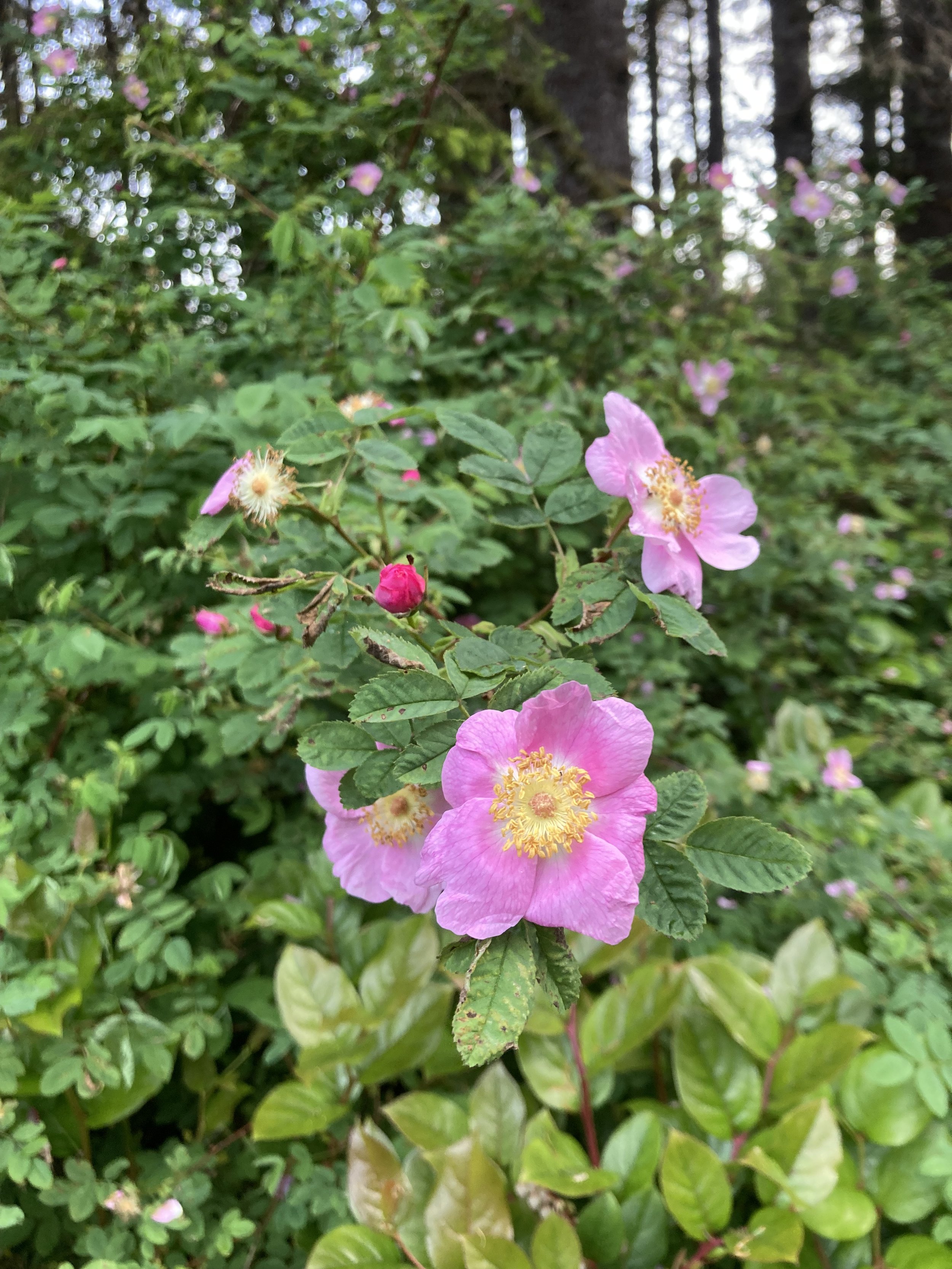Early Summer Roadside Attractions | Native Flowers
Driving down the Hood Canal in early summer you are not only greeted by views of the sparkling fjord and glimpses of the blue hills of the Kitsap Peninsula and the receding snow on the Olympics, but the luscious greens and pops of white and pinks of the native and non-native vegetation that flourishes along the highway is a feast for the eyes.
Ocean spray – Holodiscus discolor
Ocean spray – Holodiscus discolor
Ocean Spray or Ironwood is a medium to large (on average 3 to 10 feet high) shrub of the Rosaceae (rose) family characterized by its white, drooping chained flowers (or sprays). These flower sprays resemble the foam churned up by an angry sea –hence the name Ocean Spray. It blooms typically from July to August. The leaves are also distinctively lobbed oval to angular in shape with deep toothed edges. These are often covered in a fine fuzz of hairs.
It has a large range from California to Alaska, in both inland and coastal areas, but it prefers to have its feet wet and lots of Southern sun exposure. It is very hardy, able to propagate from root, seeds, and cuttings. Roots buried under rock fragments and particles ejected by the 1980 Mount St. Helen’s eruption still managed to push up growth, allowing Ocean Spray to be a successful colonizing plant of the ravaged landscape.
The wood of Ocean Spray is very hard and is prized by Native Americans for a multitude of uses: such as arrow shafts, bows, spears, harpoons, digging sticks, fishhooks, needles, and canoe paddles. Since it increases in strength when exposed to heat, it was useful for fire tongs in early days. Before iron nails were readily available, pegs of Ocean Spray were used. The leaves, flowers and bark were used medically by Native Americans to treat diarrhea, smallpox, chickenpox and as a blood tonic.
Nootka Rose –Rosa nutkana
Nootka Rose is one of three wild rose varieties native to the coastal region. It is named for Nootka Sound, BC, where it was first described by botanists in the late 1700s. It is a rigorous climbing rose with spaced thorns and bright yellow sepals on striking large pink blossoms (usually a single blossom to the branch). The leaves are round with toothed edges. It flowers from May to July and forms bright red rose hips which ripen early fall and stay on the branch well into winter. Look for a sunny exposure for this plant too, but it may be found on the edges of forests as well.
Also known as “Deer Candy,” the petals are sweetly scented and may be eaten raw, used as a base for rose syrup, or any rose infused baking. The fruit (or hips) are high in vitamin A, C and E and are used in teas, jams, and jellies. Native Americans created a decoction of the roots as an eyewash and to treat sore throats. A tea made from the bark was used to treat labor pains.
Foxglove – Digitalis purpurea
Although now considered an invasive species in the Pacific Northwest by the USDA, foxgloves are a beautiful addition to the roadside. Furthermore, they are incredibly toxic, so they don’t promote wildlife foraging along the highway. The tall purple and white spired flowers look like fairy apartment blocks and are a favourite amongst bumble bees and other pollinators.
The name digitalis comes from the Latin digitus or finger, which was ascribed to the plant first by Leonhart Fuchs in 1542 based upon the German name for the plant Fingerhut which means ‘thimble,’ but literally translates to English as ‘finger hat.’ It is unclear if the English name of foxglove is a corruption of folk’s glove and somehow related to the wee folk or fairies, or if it is related to the myth of foxes donning the petal cups to muffle their footsteps as they sneak up on the farmer’s chickens. Either way the foxgloves are surrounded by whimsy.
Less whimsical names for the plants relate to the high toxicity of it: dead man's bells and witch's gloves. All parts of the plant are toxic, whether dried or fresh and even drinking the water of a vase where cut foxgloves have been kept can be fatal.
However, digoxin harvested from the plant has been used by herbalists since the 16th century to treat heart conditions and even today it is used in heart medications.



